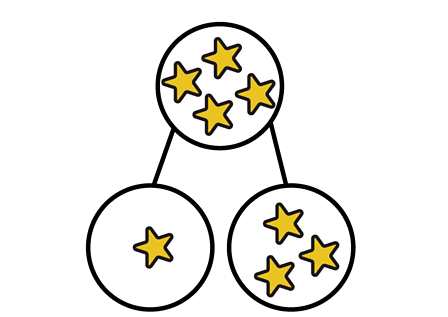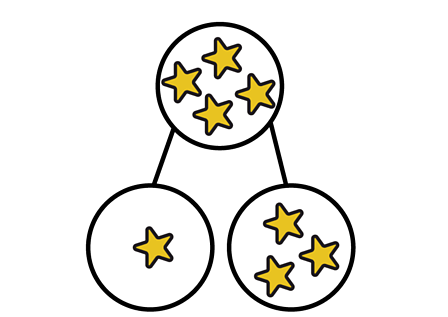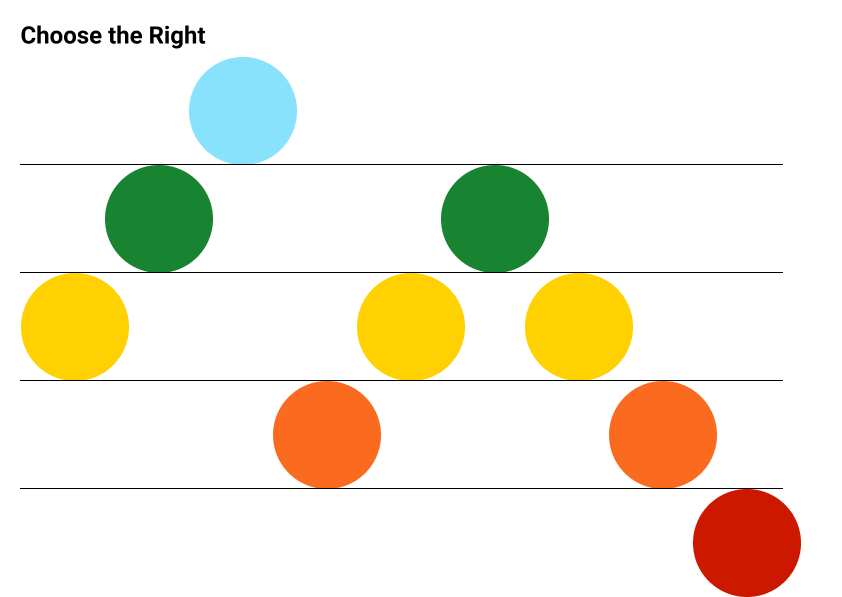
A child learns best when he or she can hear the whole song while concentrating on a part of the song.
I hear a song leader say “I will say the words of the first line, then let’s sing it.” Unfortunately, that leader is asking the child to sing something without the child knowing the beat, the melody, or the rhythm of the song! A song is so much more than words.
What parts of the song should you concentrate on while the child is listening to the whole song?
The steady beat, the melody, and the rhythm are all an integral part of the song!!! The words ride on top of all of these so we need to pay attention to them as we teach.

The brain has an amazing ability to capture all of those things… and put them into one great whole, but we help ourselves and our children to learn the song best if, during one of our activities, we:
Focus on the Steady Beat while hearing the whole song
Focus on the Melody while hearing the whole song
Focus on the Rhythm while hearing the whole song
Focus on the Steady Beat

Sing the whole song as the children are tapping the steady beat…which keeps the children personally engaged while hearing the whole song.
The brain is then making a map of the song in their heads without them even knowing. They are hearing the melody, the rhythm, and the words, but they are concentrating on the beat.
You can use rhythm sticks, pool noodles, paper plates, shakers, or egg cartons with an unsharpened pencil to tap the steady beat. One way to give variety to the steady tapping is to hold the manipulative high and then low, to one side or the other side. You can even just tap or your lap (called a patsch), clap your hands, stomp your feet, or do a combination of all of those.

Here are some examples of steady beat activities:
Family History (drum and dinger)
I’m Trying to Be Like Jesus (hand patsch pattern)
The Holy Ghost (paper cup)
Family History …about min. 5:30 (paper cup pattern)
I Know My Father Lives (paper plates)
Search, Ponder, and Pray (paper plate pattern)
Doing Good Like Jesus… about min. 3:40 (ribbon wind wands)
With the Older children you can do Steady Beat Scramble especially as a review idea.
Why is practicing the steady beat of a song important and is it different between songs?
- Steady beat can be slow, fast, or a tempo in between the two. It takes a bit of practice for the human body to adapt between different tempos. (Children have a harder time with slower beats because their heart beat is so much faster than an adults… thus a slow tempo is REALLY slow to them in contrast.)
- Steady beat can be gentle or insistent, which changes the way you tap the beat (and sing!).
- Steady beat is the organizing factor of the song and the reason why a group of people can sing together all at the same time.
- it is important to gain a sense of the beat in your body because it affects so many other parts of our life!!! (see the post Why is Steady Beat so important?).
Focus on the melody

What is the highest note of the song? The lowest note? Is the melody shaped like a mountain, or a flat beach? Do we step up or jump up, step down or jump down with our voices? Is there are part of the melody that is the same as another part?
Your brain does a great job of unconsciously recognizing all of those melody “questions” in a song (before you can even consciously name them),
But
…the brain needs to hear a melody over and over again in order to catalog and map all of the ups and downs, the highs and the lows, and the repetitions or differences in the melody.
Did you know that in order to really put the melody of a song deep into the memory, you need to hear the whole song about 10 to 20 times? A child needs to have the song repeated even more times than that! (see the post The Brain Craves Variety, but Need Repetition.) Luckily, every time you sing a song, whether you are focusing on the beat, or the the words, or the melody, the child is going to hear the melody.
Here are some ways to focus on the melody:
Melody Maps
Examples of different kinds of Melody Maps
- A simple drawing map with actions (Choose the Right)
- Boxes of different sizes and levels for the major words of the song (Article of Faith #5)
- Colored circles that stand for different words (As a Child of God) or this one
- Line drawings that look like “mountains” (The Holy Ghost)
- Dot melody map and placing words after the paper plates (I Know My Father Lives)
Squiggle Maps
A squiggle map is a melody map with some shapes of the melody, but a few zig zags, or figure 8’s, or other doodle shapes included. The child follows along with his finger after you’ve demonstrated it. Here is an example (I Wonder When He Comes Again)
Focus on the rhythm
The rhythm is the same as the words of the song. Have the children beat the rhythm while you sing.
Clap Instead Praise to the Man
Have the children do the beat, and then the rhythm. Now have half of the room do the beat, and half of the room do the rhythm.
Sometimes the rhythm is something strong within the accompaniment like The Priesthood Is Restored.

Anny Welch
Sister Dance, I am so grateful for the effort you have put forth sharing your talents teaching music. I attended a workshop years ago in Tri-Cities, Washington, and loved that you taught us how to use all the tools the church gives us to teach music. Your foundational ideas are wonderful reminders that there are limitless ways to teach. I have shared your name and program countless times to new music leaders, Stake Primary leaders, and even teachers in our public schools. Your workshops have opened up the possibilities to learn new material and teach with all our abilities, led by the Spirit, according to the children under our stewardship. Thank you!
Sharla Dance
Thank you Anny!
Janice Miller Bradbury
Thank you for this site. I am old in the church but new to this calling.